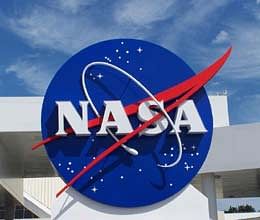
The latest discovery brings the confirmed count of planets beyond the solar system to nearly 1,700, Jack Lissauer, a planetary scientist at NASA's Ames Research Center told a press teleconference, Xinhua reported.
"We've almost doubled just today the number of planets known to humanity," Lissauer said.
These newly-verified worlds orbit 305 stars, meaning many are in "multiple-planet systems much like our own solar system," NASA said.
Nearly 95 percent of these planets are smaller than Neptune, which is almost four times the size of Earth, it said.
Four of these new planets are less than 2.5 times the size of Earth and orbit in their sun's habitable zone, where water can exist in liquid form, it said.
"The Kepler team continues to amaze and excite us with their planet hunting results," said John Grunsfeld, associate administrator for NASA's Science Mission Directorate, in a statement.
NASA said the verification of the existence of a planet is "a laborious planet-by-planet process" in the past but the team has a new powerful statistical technique that can be applied to many planets at once.
The team used the technique called verification by multiplicity to analyse stars with more than one potential planet, all of which were detected in the first two years of Kepler's observations, May 2009 to March 2011, and identified the 715 new planets.
"Four years ago, Kepler began a string of announcements of first hundreds, then thousands, of planet candidates -- but they were only candidate worlds," said Lissauer.
"We've now developed a process to verify multiple planet candidates in bulk to deliver planets wholesale, and have used it to unveil a veritable bonanza of new worlds."
Launched in March 2009, Kepler is the first NASA mission to find potentially habitable Earth-size planets. Discoveries include more than 3,600 planet candidates, of which 961 have been verified as bona-fide worlds.
The findings will be published March 10 in The Astrophysical Journal.
"We've almost doubled just today the number of planets known to humanity," Lissauer said.
These newly-verified worlds orbit 305 stars, meaning many are in "multiple-planet systems much like our own solar system," NASA said.
Nearly 95 percent of these planets are smaller than Neptune, which is almost four times the size of Earth, it said.
Four of these new planets are less than 2.5 times the size of Earth and orbit in their sun's habitable zone, where water can exist in liquid form, it said.
"The Kepler team continues to amaze and excite us with their planet hunting results," said John Grunsfeld, associate administrator for NASA's Science Mission Directorate, in a statement.
NASA said the verification of the existence of a planet is "a laborious planet-by-planet process" in the past but the team has a new powerful statistical technique that can be applied to many planets at once.
The team used the technique called verification by multiplicity to analyse stars with more than one potential planet, all of which were detected in the first two years of Kepler's observations, May 2009 to March 2011, and identified the 715 new planets.
"Four years ago, Kepler began a string of announcements of first hundreds, then thousands, of planet candidates -- but they were only candidate worlds," said Lissauer.
"We've now developed a process to verify multiple planet candidates in bulk to deliver planets wholesale, and have used it to unveil a veritable bonanza of new worlds."
Launched in March 2009, Kepler is the first NASA mission to find potentially habitable Earth-size planets. Discoveries include more than 3,600 planet candidates, of which 961 have been verified as bona-fide worlds.
The findings will be published March 10 in The Astrophysical Journal.








